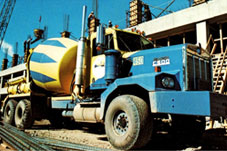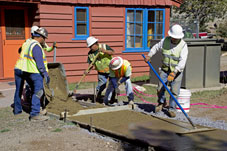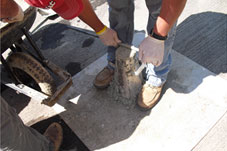 We use them every day but very few of us – especially those outside of the trades – consider how a sidewalk is constructed and put together.
We use them every day but very few of us – especially those outside of the trades – consider how a sidewalk is constructed and put together.
If you’re thinking of adding one to your commercial property, it’s important to know all of the steps that go into its creation, because it’ll help you understand factors such as how to tell if you’re getting a quality product and how expensive it’ll be in the end.
Materials and the first steps
The first steps involve the subgrade, or the native soil on which the sidewalk will be placed, which is graded and compacted in order to create an even surface. There are essential two ways to go about construction after grading and compacting: place the concrete directly on the subgrade, or a granular sub-base can be placed between the native soil and the concrete slab. The second option is usually recommended.
A sub-base is usually 150 mm, and it helps with a wide range of factors in sidewalk construction. These include bridging over minor subgrade defects by providing a cushion for uniform support and working to slow down suction, which can lead to tensile-shrinkage failures.
The material used for the sidewalk is placed on top of the subgrade or sub-base, depending on whether one is used or not. The most commonly used material in sidewalk construction in Canada and the US is concrete, but brick, tarmac, asphalt and stone can also be used.
Source: http://www.nrc-cnrc.gc.ca/ctu-sc/ctu_sc_n54
How the quality of materials is measured
 Engineering firms conduct several tests to measure the quality of concrete.
Engineering firms conduct several tests to measure the quality of concrete.
One of these is a slump test. This test is done on-site by an engineer and determines the workability of ready mixed concrete before it is poured inside the formwork. If green concrete becomes dry or the placement is halted another test should be conducted. Slump tests happen a few times per concrete batch as well.
Another test is air content testing. This is usually done in areas where damage from frost can occur, and is done using one of three methods: pressure, volumetric and free-air.
 A third test is a load carrying test, which tests the load-bearing capacity of concrete. The engineering firm takes a concrete cylinder back to a lab to dry and performs a load-bearing test under lab conditions to measure its strength.
A third test is a load carrying test, which tests the load-bearing capacity of concrete. The engineering firm takes a concrete cylinder back to a lab to dry and performs a load-bearing test under lab conditions to measure its strength.
All three of these tests are essential to ensuring the concrete used for a sidewalk is of the utmost quality and will last over time.
How expensive will it be to add a sidewalk to my commercial property?
There’s no way to determine exactly how much the construction of a sidewalk will cost you, as it varies depending on things like how many square feet it will be. However, looking at factors such as materials, testing and any fees from the contractors you hire, there’s a safe bet that it won’t be inexpensive – especially if you want a quality, long-lasting final result.
The best way to determine the cost of sidewalk construction, or at least get an estimate, is to shop around for local contractors, tell them as much as you can about your project and ask for a quote. It may not match the final price, but at least you’ll get a good understanding of what you’ll be expected to pay.
Why not make us your first estimate? If you have any more questions about sidewalk construction for your commercial property, contact us today and let us know.
Cement Mixer Truck to Alden Jewell
New Sidewalk Project to Grand Canyon National Park
5
Slump test to NCDOTcommunications








